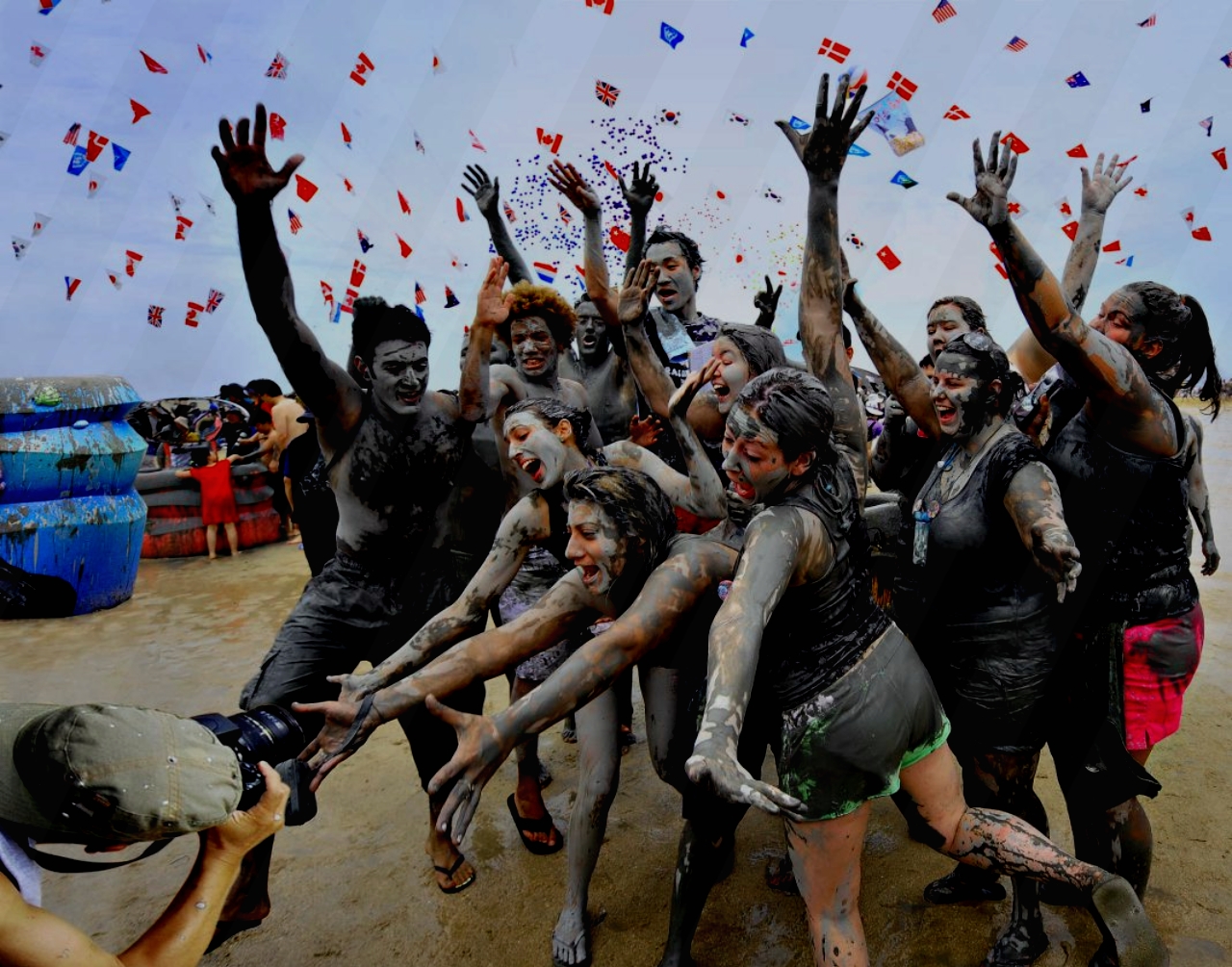When you think of notorious crime bosses from history, the images that come to mind are often of men like Al Capone, Pablo Escobar, El Chapo, Lucky Luciano, Carlo Gambino, and the like.
However, there have been plenty of women who held significant power—not just as madams of brothels. Here are 10 of the most notorious female crime bosses who have made their mark in history.
1. Stephanie St. Clair, “Queenie” (1887/97-1969)
Born in Guadeloupe in the late 1800s, Stephanie St. Clair arrived in New York via a steamer and settled in Harlem around the age of 13 or 23 (her birth year remains disputed). Fluent in both French and English, she passed herself off as a sophisticated French immigrant, leveraging her education at a time when African-Americans were migrating north to escape southern segregation.
Establishing herself as the leader of the 40 Thieves, St. Clair entered the realm of “policy banking”—a numbers game involving extortion and theft. Her adeptness at this illegal enterprise quickly brought her considerable success and infamy, attracting unwanted attention from New York’s established mobsters, particularly after Prohibition ended. Dutch Schultz, a prominent gangster, began encroaching on her territory.
Schultz’s ambition to eliminate the District Attorney drew the ire of Lucky Luciano, the influential head of New York’s Five Families, who warned Schultz against the assassination plot. Ignoring Luciano’s advice, Schultz proceeded with the plan, leading to his own demise at the hands of Luciano’s associates. As Schultz lingered before death, St. Clair delivered a final message via telegram: “As ye sow, so shall ye reap.”
2. Maria Dolores Estevez Zuleta, “Lola la Chata” (1906-1959)
Lola la Chata grew up in La Merced, one of Mexico City’s oldest neighborhoods, where she began running drugs for her mother from a market stall. Raised in an environment so lawless that even the police feared to intervene, young Lola acquired invaluable skills that would shape her future. She learned the intricacies of navigating the city, evading pursuers, and mastering the art of manipulation from her prostitute acquaintances.
After honing her skills in international drug smuggling for a prominent cartel, Lola returned to La Merced determined to forge her own empire. Following in her mother’s footsteps, she started small, operating from a humble stall. She secured protection from the police, employed children to transport heroin concealed in yo-yos, and innovatively branded her products—a pioneering move in Mexico City at the time—to cultivate customer loyalty. Additionally, Lola extended financial assistance to community members who struggled to access traditional loans.
By the 1950s, Lola la Chata had earned the moniker “drug empress,” her notoriety extending across borders to the United States.
3. Thelma Wright, “Boss Lady” (b. 1951)
Thelma, raised in a loving Catholic family, seemed destined for a different path. However, her life took a turn when she fell in love with Philadelphia heroin dealer Jackie Wright. Together, they embraced the lifestyle that only crime could provide. When Jackie was tragically murdered, Thelma, driven by love and a desire to secure her son’s future, took over his operations without hesitation. She couldn’t let go of the life she had become accustomed to.
As the new Boss Lady, Thelma managed a coast-to-coast empire of heroin and cocaine differently than her husband had. She operated without employees, only supplying directly. Her meticulous and strategic approach earned her respect and unprecedented success. She enjoyed a lavish life – private jets, custom cars, speedboats – until a shootout in 1991 changed everything. The loss of friends and associates made her realize she needed to exit the dangerous business.
Thelma chose a new path, quietly working as a receptionist and evading capture. Her life took a positive turn as she dedicated herself to helping vulnerable women and teenagers avoid the pitfalls she once faced.
4. Griselda Blanco Restrepo, “Cocaine Godmother” (1943-2012)
Born into a tumultuous upbringing in Colombia, Griselda delved into a life of crime and prostitution early on. However, it was her second marriage that propelled her into the cocaine trade, where she played a pivotal role in enhancing the Medellin Cartel’s operations by designing a specialized undergarment for smuggling cocaine into the US.
Renowned as the Black Widow, Griselda earned her nickname for the killings of both her second husband in a parking lot shootout, along with six of his bodyguards, and her third husband, whom she had assassinated for infidelity.
As her influence in the criminal underworld grew, rivaling even Pablo Escobar, the DEA intensified efforts to apprehend her. She became a dominant figure in Miami’s cocaine trade throughout the 1970s and 1980s, yet her reign came to an end when she was convicted for her husbands’ murders and other crimes, though speculation suggests she may have been responsible for up to 200 deaths.
Sentenced to nearly two decades in a US prison, Blanco was eventually deported to Colombia. There, shortly before her 70th birthday, she met a violent end, gunned down outside a butcher’s shop in Medellin.
5. Tilly Devine, “Queen of the Loo” (1900-1970)
Tilly began her career as a prostitute in London during the interwar period, earning £20 a week at a time when the average wage was less than £3. At the age of 17, she married Jim Devine, an Australian serviceman who later became her pimp in Sydney.
Moving to Woollomooloo, known locally as “the Loo,” Tilly thrived in the vibrant seaside district. She quickly gained notoriety, accumulating 79 convictions within five years. Her last conviction, for slashing a man with a razor, landed her a two-year jail sentence.
Despite her time behind bars, Tilly’s ambition remained undimmed. Upon her release, she seized upon a legal loophole in the Police Offences Act (1908), which permitted women to operate brothels. Establishing herself as a madam, she lavished attention on her girls while Jim kept them addicted to cocaine. This arrangement proved lucrative, enabling Tilly to expand her empire rapidly.
Within a decade, she owned 18 brothels and amassed a collection of diamonds that rivaled those of the Queen of England—allegedly even better ones, as she liked to boast. Clad in furs and known for hosting extravagant parties, Tilly became a prominent figure in Sydney society. She also contributed to Australia’s war efforts financially.
Eventually parting ways with Jim, Tilly garnered various nicknames in the press, including “the Queen of the Night,” “the Queen of the Loo,” and simply “the worst woman in Sydney.”
6. Cheng Chui Ping, “Sister Ping” (1949-2014)
For over a decade, known as Sister Ping in New York’s Chinatown, she orchestrated the smuggling of up to 3,000 Chinese immigrants into the US, amassing a fortune exceeding $40 million. Her fees were exorbitant, demanding $40,000 per person. Those unable to pay were subjected to threats of violence and imprisonment until the balance was settled. Conditions aboard the smuggling ships were harsh, with a tragic incident in June 1993 where a ship carrying 300 immigrants ran aground in Queens, resulting in 10 deaths as people attempted to swim to safety.
Ping launched her human smuggling, or “snakehead,” operation soon after arriving in the US in 1981. Operating from her store in Manhattan’s Chinatown, she collaborated with other snakeheads to expand operations significantly. Using the proceeds, she invested in legitimate enterprises including a travel agency, real estate ventures, restaurants, and a clothing store. She acquired property in Chinatown, apartments in Hong Kong, and a farm in South Africa.
Following her indictment, Ping fled to China where she continued to manage her operations. Hong Kong police apprehended her in 2000, and three years later, she was extradited to the US. Testimony from witnesses worldwide contributed to her prosecution.
7. Phoolan Devi, “Bandit Queen” (1963-2001)
As a low-caste woman in India, the naturally headstrong Phoolan Devi had a hard time growing up. In fact, her family hated her. When she was 10, her uncle knocked her out with a brick for saying he stole her father’s land. Then he married her off to a 45-year-old man to get rid of her. When she came back, aged 12 and no longer a virgin, her mother told her to jump down a well. She didn’t, so her uncle arranged for the local bandits to take her away for good.
In captivity, Phoolan may have faced a lifetime of gang rape had it not been for an unlikely savior. Bikram Singh, a bandit of the same low caste as she, shot the high caste leader to death. The two became lovers, but not for long; Singh was killed in revenge, and Phoolan locked up in a village.
When she escaped, she gathered followers and took revenge of her own. On Valentines Day 1981, dressed in a khaki police coat, blue jeans, boots, and lipstick – with a gun and ammo slung over her shoulders – she marched her men to the village and demanded to know the whereabouts of her captors. The villagers didn’t know, so she had 30 of them (all men) lined up and shot. Because they were all from the landowning warrior caste, she became the most wanted person in India with a $10,000 bounty on her head.
Two years later, aged 20, she gave herself up. By this time, she had won the hearts of the Indian public. 8,000 people gathered at her hideout for the surrender. Evidently touched, she entered politics when she got out of prison.
8. Marica Licciardi, “The Godmother” (b. 1951)
Maria Licciardi was born into a mafia family, with her father and brother already established as bosses within the Camorra. However, it was tragedy that thrust her into the role of la Madrina (“the Godmother”)—after her nephew, next in line for leadership, was murdered.
As head of the Licciardi Camorra, Maria oversaw extensive operations including extortion, drug trafficking, and the manipulation of public contracts. Following a brutal mafia conflict, she orchestrated a historic alliance among Camorra clans, persuading them that cooperation would yield greater profits than internal strife—an approach that showcased her strategic acumen.
In a notable display of leadership, Maria intervened decisively in 1999 when a dangerously potent heroin shipment arrived from Istanbul. Recognizing its lethal purity, she forbade its distribution, but not all clans complied. The Lo Russo clan’s defiance resulted in numerous fatalities among users, triggering public outcry, a law enforcement crackdown, and the eventual unraveling of Maria’s alliance.
Despite being one of Italy’s most wanted criminals, Maria Licciardi earned a grudging respect from law enforcement for her pragmatic and calculated leadership style.
9. Ma Barker, “Machine Gun Kate” (1872-1935)
Ma Barker, once dubbed “the most vicious, dangerous, and resourceful criminal” in America by J. Edgar Hoover, rivaled infamous figures like Bonnie and Clyde, John Dillinger, Baby Face Nelson, and Al Capone during her notorious era. She was the matriarch of a gang of outlaws that wreaked havoc across the Midwest in the early 1930s. Ma Barker not only aided her sons but was also well-versed in their criminal schemes, earning her the moniker Machine Gun Kate for her proficiency with the Tommy gun.
Together with her sons, they caused nationwide turmoil, accumulating a fortune estimated at up to $2 million through highway robberies, bank and post office heists, extortion, and kidnappings, which sometimes resulted in the deaths of law enforcement officers. The violent streak of the Barkers was evident when one son, Herman, fatally shot himself in 1927 to evade capture for killing a policeman. Later, the remaining Barker boys were implicated in the killings of the police chief of Pocahontas, Arkansas, and the sheriff of Howell County, Missouri.
As kidnapping became a federal offense, the Barkers came under FBI scrutiny, leading them to scatter. Ma relocated with her son Fred to Florida, while Arthur hid separately. However, Arthur’s arrest revealed a map indicating the whereabouts of Ma and Fred. Federal agents surrounded their Florida hideout before dawn, initiating a confrontation known as the “battle of Oklawaha.” Ma and Fred responded with gunfire from the second-floor windows, resulting in a fierce shootout. When the chaos subsided, Ma Barker was discovered dead in an upstairs bedroom, still clutching her machine gun.
10. Alice Diamond, “Queen of the Forty Elephants” (1896-1952)
The Forty Elephants were a gang of working-class women who specialized in shoplifting, blackmail, and extortion in London from the 1870s to the 1950s. Operating under various female bosses known as “queens,” they employed a bold modus operandi: entering department stores and concealing expensive goods under their voluminous dresses, which were ideal for such activities in the fashion of the time.
Among the most renowned queens of the Forty Elephants was Alice Diamond, a formidable figure at 5-foot-9 with a commanding presence comparable to most men of her era. She was distinguished by her collection of diamond rings and knuckle dusters, and she implemented strategic changes within the gang. Alice reorganized them into separate cells to orchestrate simultaneous heists, reasoning that this would scatter police attention and catch their targets off guard.
Alice Diamond also devised the Hoister’s Code, a set of rules dictating gang operations. It stipulated the equal division of proceeds, responsibility for the families of incarcerated members, mutual alibis, and unwavering loyalty under threat of ridicule or punishment.
However, it was this very Code that eventually led to Alice’s downfall. Her control became overly restrictive, forbidding members from taking independent actions, including getting married. When one of the Elephants disobeyed her orders and married, Alice retaliated by orchestrating an attack on the newlyweds. This act landed her in prison for a year and a half. By the time of her release, a new queen had assumed leadership of the gang.






